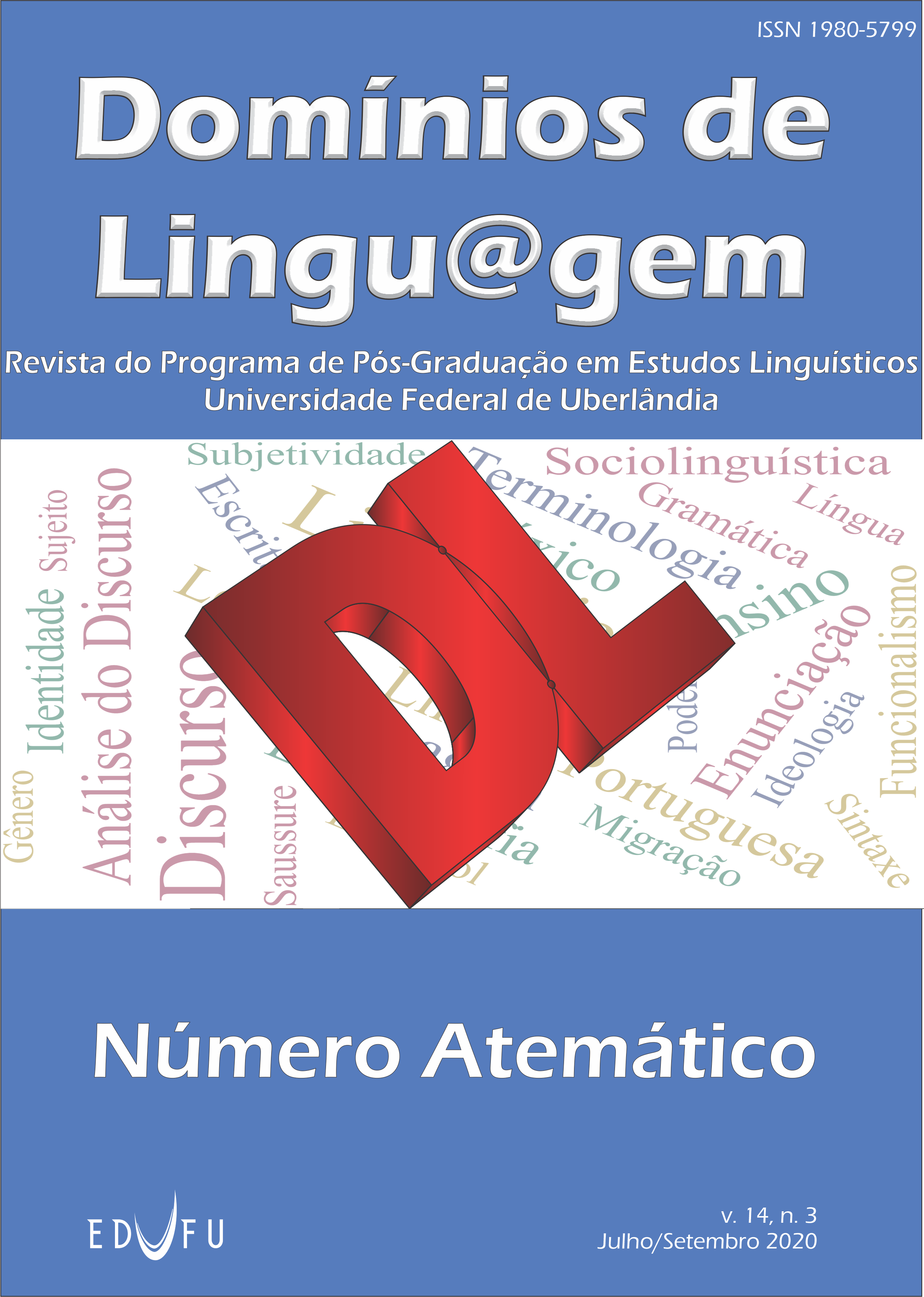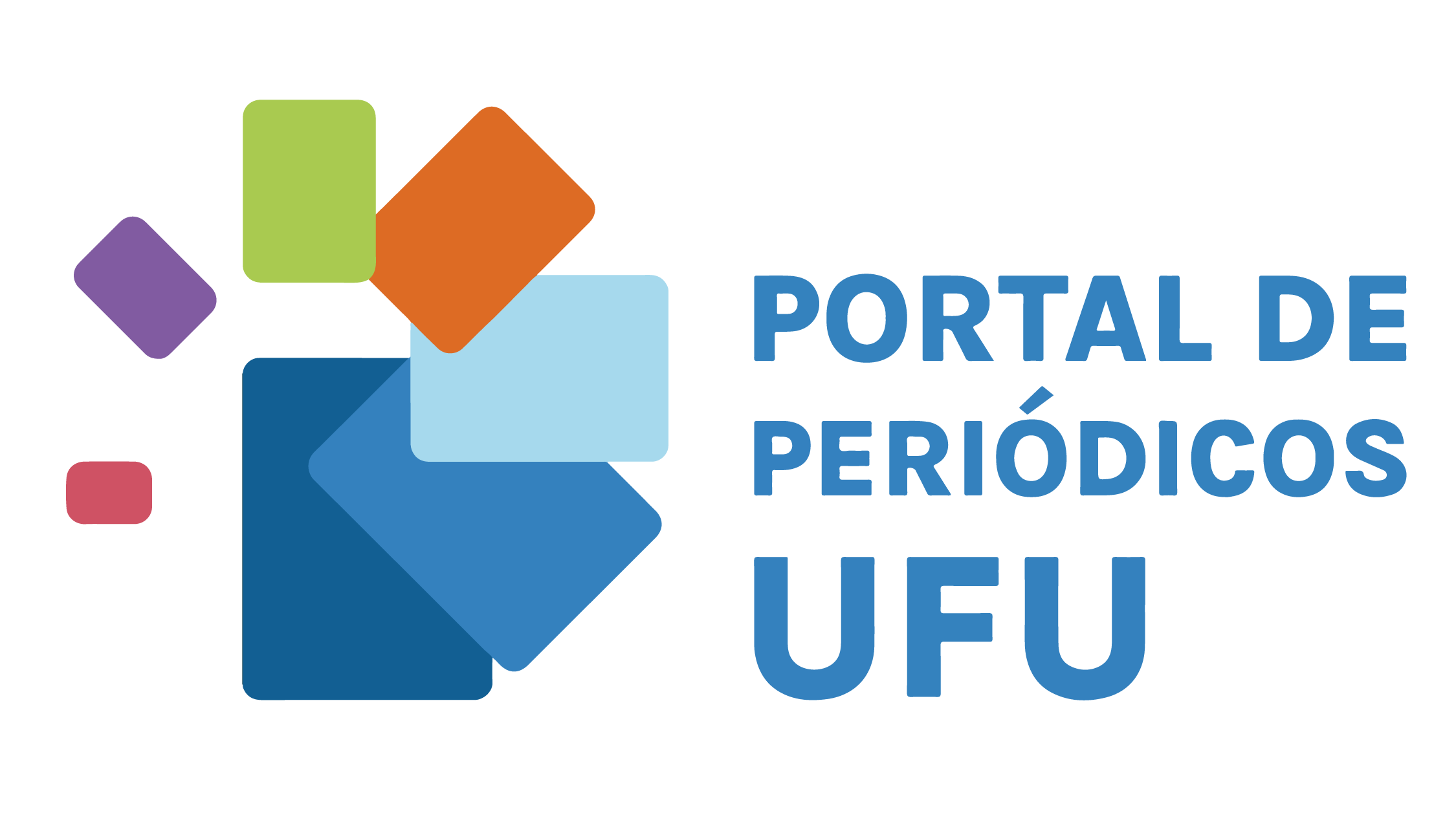The effects of teaching graphophonological relations on the reduction of orthographic mistakes in Youth and Adult Education
DOI:
https://doi.org/10.14393/DL43-v14n3a2020-7Keywords:
Orthography, Youth and Adult Education, Graphophonological relationsAbstract
Writing is socially valued, as it represents verified knowledge and enables users to cultural assets. Writing according to orthographic norms is essential for one to make an efficient use of the language and not be stigmatized for having only the oral modality. In the various stages of teaching, difficulties are still detected in spelling; however, with students at an irregular educational trajectory, such as those of the Youth and Adult Education (YAE), the difficulties are even greater. Thus, this study aims to evaluate the effects of the teaching of graphophonological relations in the reduction spelling mistakes in a class of YAE level VI (8th/9th grades). The data consist of the three most frequent mistakes in class, previously verified in a diagnostic data collection, and they were the deletion of <r> in coda of verbs in the infinitive, the supergeneralization of the grapheme used to mark the coda of verbs ending in [w], and monophthongation of verbs in the perfect tense of the indicative. An action research was carried out with qualitative and quantitative analyses of the data, which were a set of pre-tests, intervention activities, and a set of post-tests. The results point to the pertinence of systematized work with spelling in order to decrease problems that tend to linger in the educational trajectory of students, for the number of mistakes decreased from 103 to 24 after the intervention. The conclusion is that orthographic activities that relate the knowledge students already have to information on the structure and functioning of the language help reduce deviations from the norm.
Downloads
Metrics
References
BAGNO, M. Preconceito linguístico: o que é, como se faz. 49 ed. São Paulo: Loyola, 2007.
BORTONI-RICARDO, S. M. Educação em língua materna – a sociolinguística na sala de aula. São Paulo. Parábola Editorial, 2009.
BRASIL, Ministério da Educação/Inep. Mapa do analfabetismo no Brasil. Disponível em: www.portal.inep.gov.br.
CAGLIARI, L. C. Alfabetização e ortografia. Educar, Curitiba, Editora UFPR, n. 20, p. 43-58. 2002. DOI https://doi.org/10.1590/0104-4060.263
CAGLIARI, L. C. Alfabetizando sem o bá-bé-bi-bó-bu. São Paulo: Scipione, 1999.
FREIRE, P. A educação na cidade. 3. ed. São Paulo: Cortez, 1991.
GNERRE, M. Linguagem, escrita e poder. 4ª ed. São Paulo: Martins Fontes, 1998.
KATO, M. A. No mundo da escrita: Uma perspectiva psicolinguística. 7 ed. São Paulo: Ática, 2009.
KLEIMAN, A. B. (org.). Os significados do letramento: uma nova perspectiva sobre a prática social da escrita. Campinas: Mercado das Letras, 2008.
LEMLE, M. Guia teórico do alfabetizador. – 17. ed. – São Paulo: Ática, 2007.
MORAIS, A. G.; LEAL, T. F.; ALBUQUERQUE, E. B. C. (Orgs.). Alfabetizar letrando na EJA: fundamentos teóricos e propostas didáticas. Belo Horizonte: Autêntica Editora, 2010.
MORAIS, A. G. Ortografia: ensinar e aprender. São Paulo: Ática, 2008.
MORAIS, A. G. O diagnóstico como instrumento para o planejamento do ensino de ortografia. In: SILVA, A. MORAIS, A. G.; MELO, K. L. R. (org.). Ortografia na sala de aula. Belo Horizonte: Autêntica, 2007a. p. 45-60.
MORAIS, A. G.; SILVA, A. Ensinando ortografia na escola. In: MELO, K. L. R.; MORAIS, A. G.; SILVA, A. (org.). Ortografia na sala de aula. Belo Horizonte: Autêntica, 2007. P. 61-75
REGO, L. L. B. O aprendizado da norma ortográfica. In: MELO, K. L. R; MORAIS, A. G.; SILVA, A. (org.). Ortografia na sala de aula. Belo Horizonte: Autêntica, 2007.
ROBERTO, T. M. G. Fonologia, fonética e ensino: guia introdutório. São Paulo: Parábola Editorial, 2016.
SOARES, M. Alfabetização e letramento. 7. ed. São Paulo: Contexto, 2017.
SOUZA, O. Escrever na Escola: formação de cidadania e espaço para prosa de autor? Educação. Porto Alegre – RS, ano XXVII, n. 2 (53), p. 349 – 365, Mai./Ago. 2004.
Downloads
Published
How to Cite
Issue
Section
License
Authors who publish in this journal agree to the following terms:
Authors retain the copyright and waiver the journal the right of first publication, with the work simultaneously licensed under the Creative Commons Attribution License (CC BY-NC-ND 4.0), allowing the sharing of work with authorship recognition and preventing its commercial use.
Authors are authorized to take additional contracts separately, for non-exclusive distribution of the version of the work published in this journal (publish in institutional repository or as a book chapter), with acknowledgment of authorship and initial publication in this journal.









